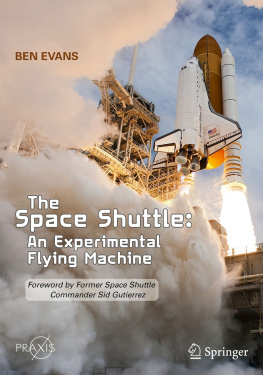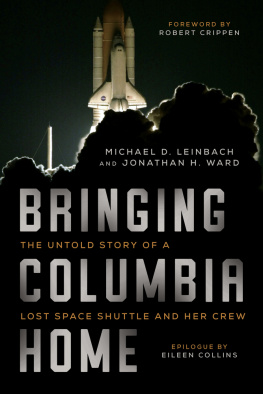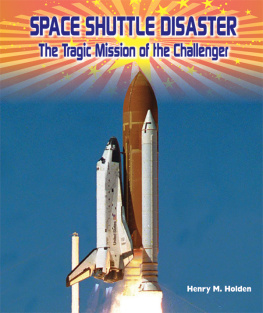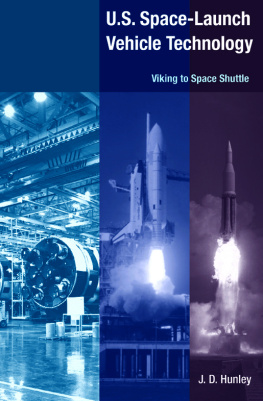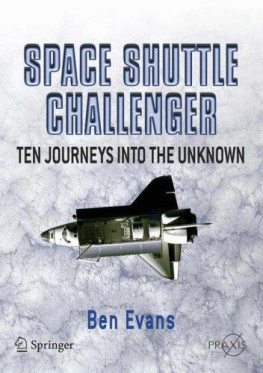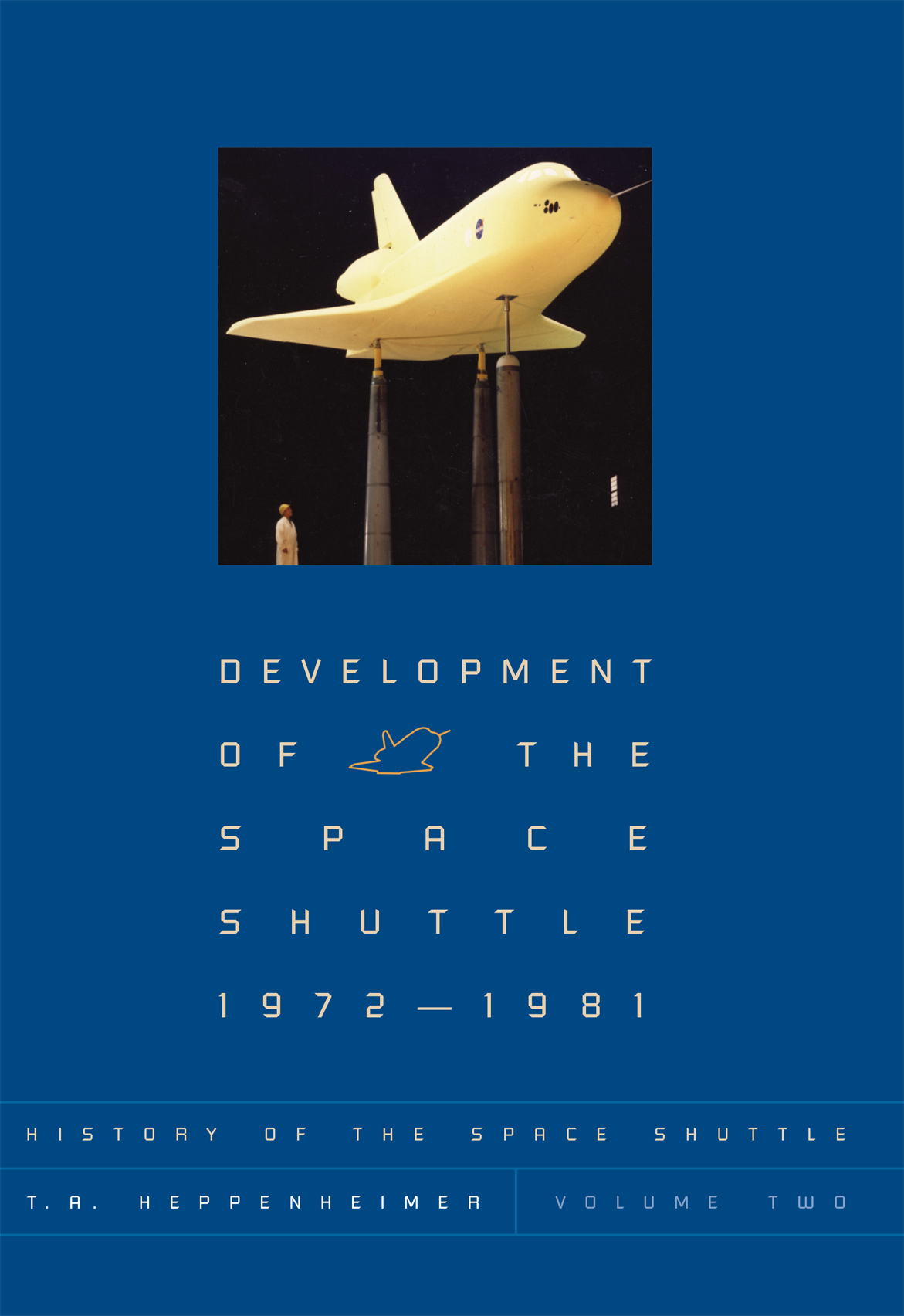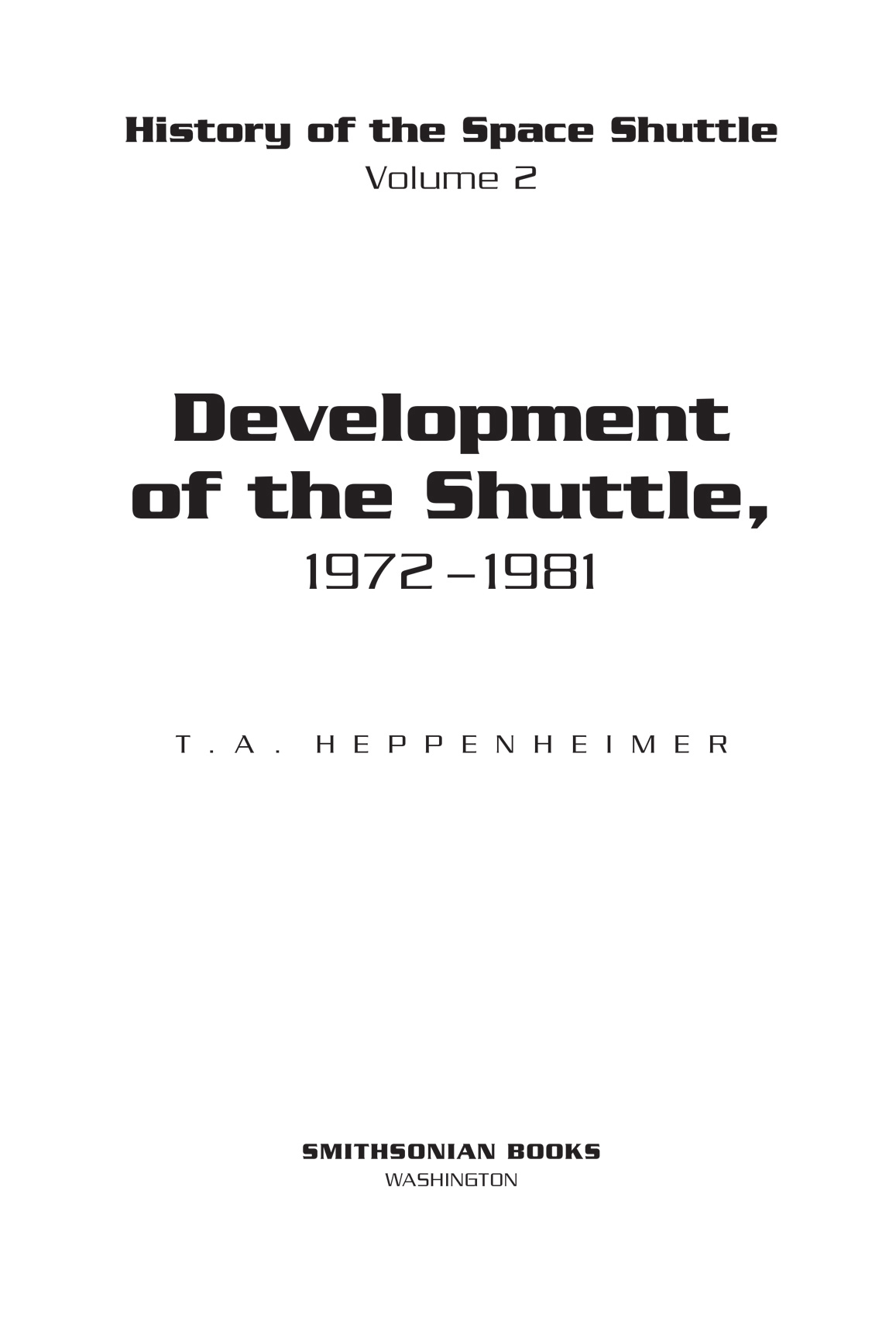By special arrangement with the National Aeronautics and Space Administration, History Office, this publication is being offered for sale by Smithsonian Books, Washington, D.C. 20560-0950.
Copy editor: Karin Kaufman
Production editor: Ruth W. Spiegel
Designer: Janice Wheeler
Library of Congress Cataloging-in-Publication Data
Heppenheimer, T. A., 1947
History of the space shuttle / T. A. Heppenheimer.
p. cm.
Includes biographical references and index.
Contents: v.1. Development of the space shuttle, 19651972
v. 2. Development of the space shuttle, 19721981.
eBook ISBN: 978-1-58834-441-0
Hardcover ISBN: 978-1-58834-009-2
Trade Paperback ISBN: 978-1-58834-285-0
1. Space shuttlesUnited StatesHistory. I. Title.
TL795.5 .H4697 2002
629.4410973dc21
British Library Cataloguing-in-Publication Data available
For permission to reproduce illustrations appearing in this book, please correspond directly with the owners of the works, as listed in the individual captions. Smithsonian Books does not retain reproduction rights for these illustrations individually, or maintain a file of addresses for photo sources.
This book may be purchased for education, business, or sales promotional use. For information please write: Special Markets Department, Smithsonian Books, P.O Box 37012, MRC 513, Washington, DC 20013.
www.SmithsonianBooks.com
v3.1
To Connie and to Raizel, who look toward the future
Contents
Illustrations
Evolution of the Space Shuttle Configuration
Space Shuttle with 150,000-Pound Orbiter
Orbiter Wing Structure
Vertical Stabilizer
Orbiter Crew Cabin and Forward Fuselage
NASA Management
Britains Blue Streak Compared with the Atlas and Thor
Comparison of Europa, Delta, Ariane, and Atlas-Centaur
General Layout of Spacelab
External Tank
Solid Rocket Booster
Vandenberg Air Force Base SLC-6 Concept, c. 1980
Concept for a Five-Engine Installation on the Orbiter
X-24B Lifting Body, Escorted by an F-104 Chase Plane
Cutaway View of the Orbiter
Enterprise on Public Display
The Mate-Demate Facility at Edwards Air Force Base
Approach and Landing Test Flight Profile
Enterprise and Its Boeing 747 Taxi to the Runway
Enterprise Separates from Its Carrier Aircraft
Enterprise Dives Steeply Toward Runway
Flow Diagram for the Space Shuttle Main Engine
Space Shuttle Main Engine Components
Rocket Engine Test Facilities in the Santa Susana Mountains
Space Shuttle Main Engine with Short Nozzle
The Whirl Problem in the Fuel Turbopump
High-Pressure Oxygen Turbopump
Remains of an Oxygen Turbopump
Space Shuttle Main Engine Arrives on a Flatbed Truck
of a Space Shuttle Main Engine in Mississippi
Space Shuttle Main Engine Fuel Preburner
Space Shuttle Main Engine under Test at Rocketdyne
Main Propulsion Test Article with Its External Tank
Main Propulsion Test Article External Tank on Test Stand
Space Shuttle Main Engine Firing on Test Stand
Space Shuttle Main Engine Test History
Cross-Section of a Solid Rocket Motor Field Joint
Drop Test
Test of Thiokols Solid Rocket Motor in Utah
Transport by Barge of an External Tank
Hoisting Enterprise into Position at NASA-Marshall
Orbital Maneuvering System
Reaction Control System
Orbiter Systems Actuated by Hydraulics
Auxiliary Power Unit with Exhaust Ports
Installation of Thermal Protection System Tiles
Thermal Protection System
Thermal Protection System Interfaces
Thermal-Protection Tiles on the Underside of the Fuselage
Thermal-Protection Tiles on the Underside of a Wing
Development of Capability in Computational Fluid Dynamics
Scale Model of the Shuttle Orbiter in a Wind Tunnel
STA-099 Being Readied for Structural Tests at Lockheed
STA-099 within Its Test Rig
Environmental Control and Life Support System
Payload Bay Doors
Remote Manipulator System
Orbiter Aft Mission Station
Detailed Cross-Section of a Solid Rocket Motor Joint
Shuttle Data Bus Networks
The Rotational Hand Controller
Orbiter Flight Deck
Work Breakdown Structure for the Space Shuttle Main Engine
A Space Tug Concept
Centaur Upper Stage with Space Tug Concept Designed as a Derivative
Inertial Upper Stage Configurations Compared to the Centaur Upper Stage
The Titan III Family
New Launch Vehicles of the 1980s
Shuttle Facilities at the Kennedy Space Center
Hold-Down Posts Secure the Solid Rocket Boosters
A Test Pilot Trains within a Space Shuttle Simulator
Enterprise atop Its Mobile Launch Platform
Enterprise Rides a Crawler-Transporter
Enterprise at Its Kennedy Space Center Launch Pad
Columbia Being Mated to Its External Tank
Use of a Forklift Truck Installing a Space Shuttle Main Engine
Liftoff of Columbia, 12 April 1981
Cutaway View of Spacelab
Space Stations Supported by the Shuttle
Tables
NASA Budget Summary (in Thousands of Dollars)
GAOs Permissible Overruns, 1972
Program Cost Estimates
NASAs Total Program Cost Estimates
Subcontracted Elements of the Shuttle Program
European and American Objectives in the Space Shuttle Program
Percentage of European National Contributions, 1973
Comparison of S-II and External Tank
Rankings of Thiokol and Lockheed
Weight in Orbit (in Pounds)
Flight Tests of Enterprise, 1977
Component Tests at Coca-1
Strength of Standard TPS
Strength of Densified TPS
Vibration Data: Orbiter
Vibration Data: Complete Shuttle
Fuel-Cell Characteristics, Apollo and Shuttle
Comparison of Three Computer Systems
Allocation of Shuttle Orbiter Data Buses
Software for STS-1
Capabilities of Existing Upper Stages
NASA Budgets, 19721981 (in Billions of Current-Year Dollars)
Shuttle Overrun Estimate, 1975
SALT II Numerical Limits, 1979
DDT&E Shuttle Program Costs, Discounted to 1971 Dollars (in Millions of Dollars)
Recommended Costs per Flight, 1976 (in Millions of Dollars)
Acknowledgments
T he development of the space shuttle is a large topic, and no single author can hope to cover the pertinent technologies without considerable support. I indeed received such assistance in writing this book, and it is a pleasure to note the people who helped me.
The management of Rocketdyne was particularly supportive. My interviewees there included Program Manager John Plowden, Fred Jue, Bob Biggs, and Maynard Joe Stangeland. Several key people who now are retired gave interviews as well: Paul Castenholz, Ed Larson, and Willy Wilhelm. Bob Biggs also reviewed my draft chapter on the Space Shuttle Main Engine (SSME) and helped to improve its accuracy.
I received additional support within NASA. Dave Geiger and Boyce Mix hosted a visit of several days at the Stennis Space Center. There I saw two SSMEs in tests at full duration while receiving good help in the archives from historian Mack Herring. J. R. Thompson, former SSME project manager at NASA-Marshall, gave an interview as well. Other key interviewees included Dale Myers and Hans Mark.
Dennis R. Jenkins, author of Space Shuttle (Stillwater, Minn.: Voyageur Press, 2001), provided valuable help with this book. He gave a lengthy and critical review of the text. He generously shared many line drawings and photos that he had used in his own book and that now appear in this one. In addition, he shared his considerable knowledge of the Launch Processing System (LPS). In this fashion he greatly improved my initial treatment of the LPS, which was both sketchy and inadequate.


